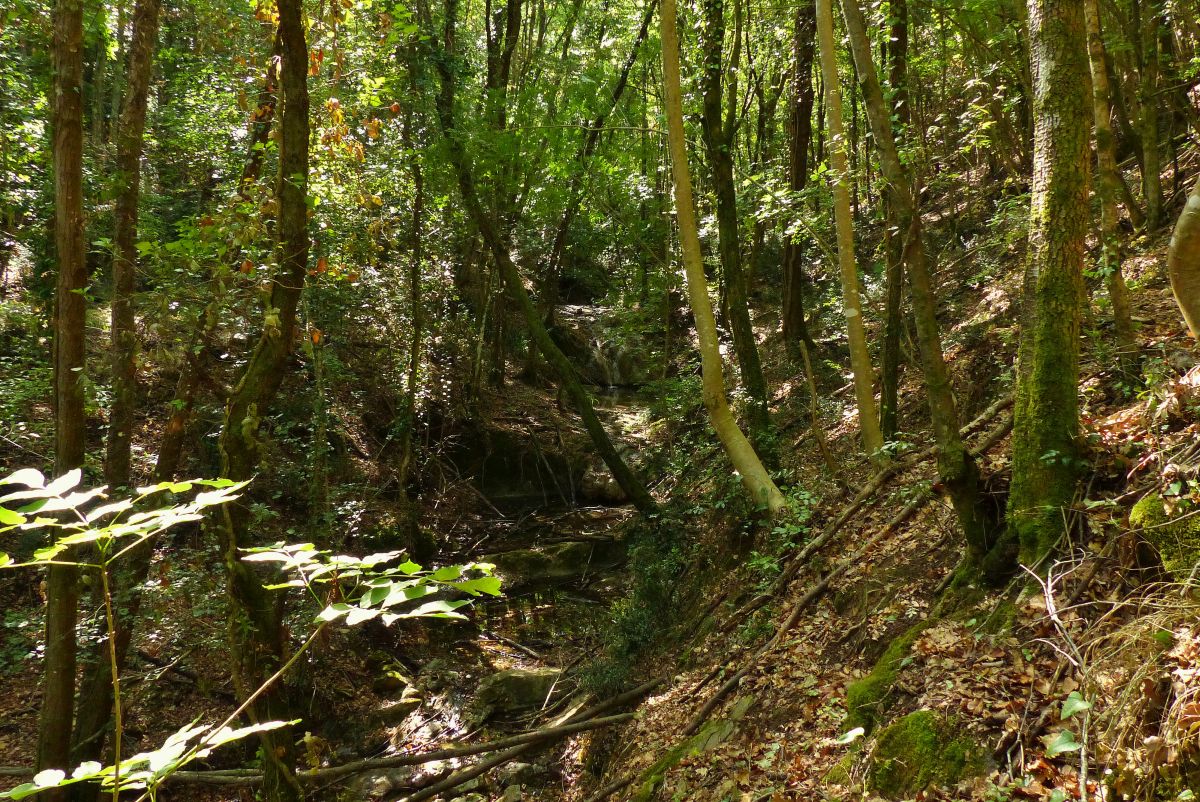Zu Fuß
Impressum des Erlösers und des Botro des Rektorats
Ein kurzer Spaziergang im Wald voller Legenden
As you go along the road that climbs up to the extraordinary medieval village of Sassa, amidst landscapes of untouched authenticity and beauty, take a detour to the right to find yourself at the starting point of a short but significant route full of legends. “A legend links Sassa to the early years of Christianity, when the encounter between St Peter and Christ the Redeemer took place in the woods of Montalpruno. At the Botro della Canonica, in La Chiesa (of which just a few ruins, partially covered by vegetation, are visible today) where Peter is said to have taken refuge from Roman persecution, the Lord appeared to him and asked him the famous question: Quo vadis Domine? Having received the invitation to follow him to Rome and to accept martyrdom, Peter is said to have left this spot where the footprint of Christ’s foot is said to have remained on a stone at the side of the road. The legend explains the vivid cult of Christ the Redeemer that has been rooted in Sassa for centuries” (from “Guida alla Val di Cecina” by Susanne Mordhorst). All of this route takes place within the forest.

